As Apple Music expands its selection of DJ mixes, it’s also set to compensate artists and producers. Here’s how it will work.
As widely anticipated, Apple has worked on a process that will allow it to pay rights holders. They’re not the first company to do that in some form – Mixcloud, for instance, signed a deal with giant Universal Music Group (UMG), which does compensate rights holders for that company’s content inside DJ mixes. But those arrangements required explicitly licensing the content in mixes, meaning it largely breaks down in the real world, unless you normally only DJ with UMG tracks. Apple is the first company to find a general-purpose solution for licensing tracks inside mixes without separate agreements. And it works directly with rights-holders – even tracks not identified as I understand it get royalties added to a general pot and divided later.
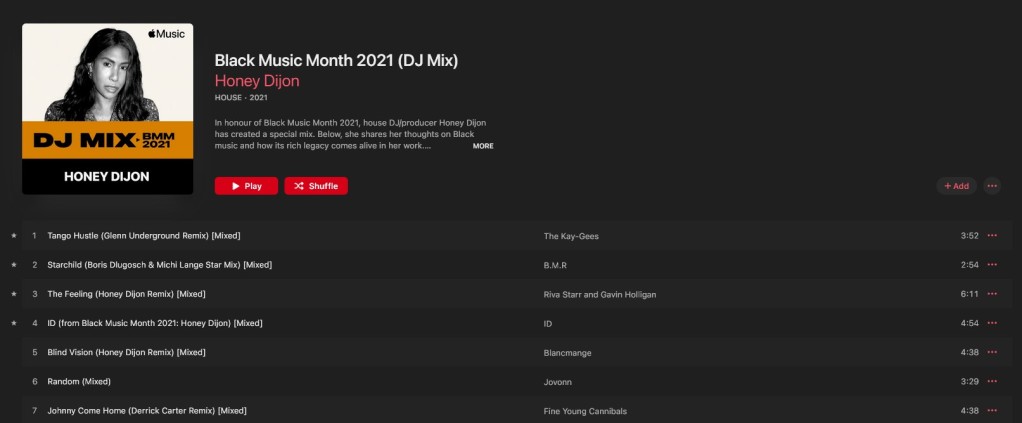
Let’s not mince words here – Apple Music is probably also the first service that matters for this business model, at least for the western world, because of three elements – quality, staff, and reach. Artists do find plays on traditional outlets like radio and TV can actually produce some reasonable income to pay toward rent. It’s about time someone worked it out with DJ mixes at a scale that registered at any noticeable level.
There are a few reasons this is an interesting announcement.
It’s built on Shazam. Apple has their own content identification tech as you know well, and they’re using it here, of course. That’s handy for us, too, because it means you can send your music off to distribution – even using something like DistroKid – and pull out your smartphone and hit ‘Shazam’ with it playing and actually see the content ID working. That’s very much not true of the mysterious black-box content ID systems out there used on other platforms (cough), and I think everyone from a bedroom producer to a Grammy-winning artist is likely to come with that kind of expectation.
It’s heavily “curated.” Apple Music has been very forward about focusing on human curators and platforms, not generic algorithms, all the way back to the Beats acquisition. (That includes emphasizing Beats Radio as the same.) What this means in practical terms is that what you see in the DJ mix section comes from a human editorial team with their own priorities. On the surface, that means big names and recognizable brands (even “underground” brands), not smaller-known outlets or artists. A lot of lesser-known DJs or labels are going to be waiting for the time being. But for the purposes of racking up enough plays of your track to actually earn something, big-name acts may be what you want – more on that in a bit.
They’ve got a running start. Again, let’s not mince words – there’s a ton of music biz vaporware in streaming. But I think Apple’s record at the moment speaks for itself; they’ve already built up their DJ section over the recent past with materials from Boiler Room, Mixmag, huge EDM stuff like Tomorrowland (whether that’s your taste or not), France’s Cercle, and also folks like Honey Dijon or Dām Funk or VTSS. Oh, and you can organize some workout mixes to Charlotte de Witte, if that’s your thing. (It maybe isn’t your thing, but then if you do make music you can jog to, this announcement might well mean you hope your tracks are in her promo pool, because you could earn something. Speaking of running starts.)
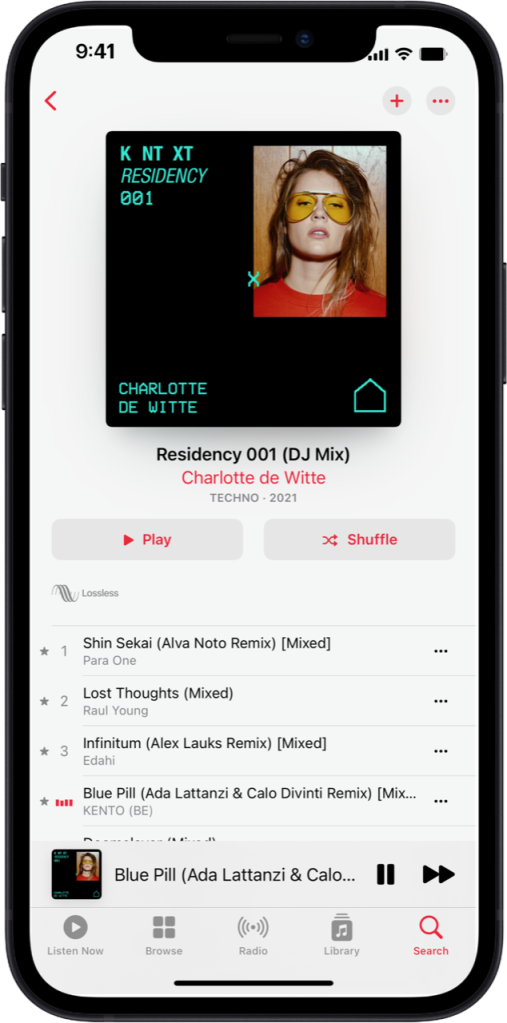
There’s new content, with more coming. The first DJ mix content to really be excited about is also part of this week’s announcement – Studio K7! is bringing their legendary DJ-Kicks series to the platform. That I think is a big deal, as DJ-Kicks has brought some great and influential music over the years and even helped launch some careers.
The bad news: you can’t buy tracks. Unlike a service from someone like Beatport, it’s almost impossible to then buy the tracks you see or download them to add to your DJ sets. But let’s hope people search Bandcamp or Beatport with those track IDs, too. And Apple – please do fix that, too.
How it looks
Apple Music has a dedicated DJ Mix section:
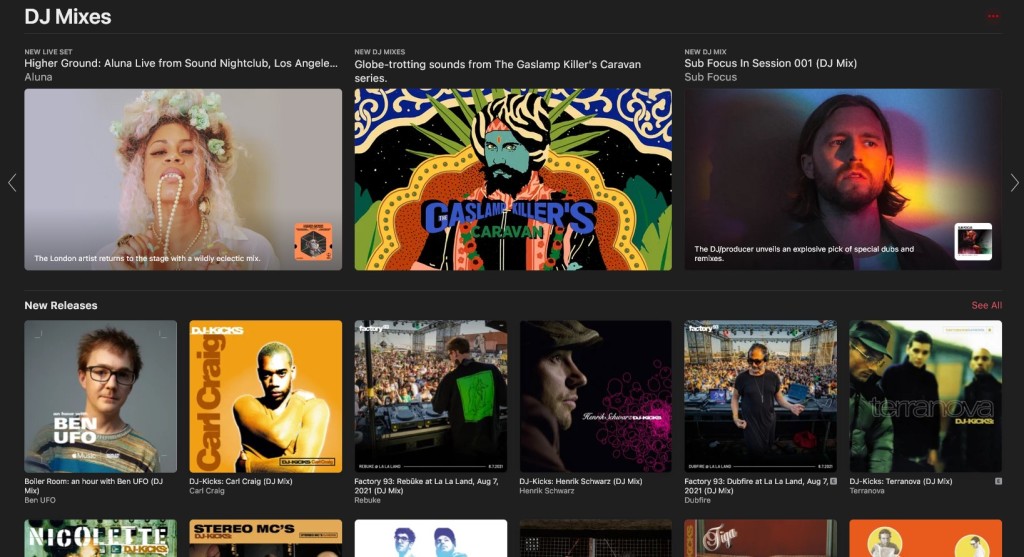
That will work everywhere in the world that has Apple Music accounts, with some specific local focus depending on where are you – and that local focus appears to be growing to more “secondary” world markets, too. (On another occasion, we should focus entirely on the perspective from China, for instance, but – not today.)
Track IDs now also show up inside playlists displayed in the DJ mixes. Just as when you tap Shazam on your phone while a mix is playing, sometimes you’ll see unidentified tracks. Not all music is in the distribution system, basically, though features like this one from Apple suggest you may want to check with your distributor even if you’re mainly focused on selling vinyl via Bandcamp or something like that.
Content ingestion on these platforms is universally complex and archaic, but you can also see across Apple’s mix and radio products that some content has explicit tracklists and some doesn’t (the latter using the content identification scheme), and that some metadata is better formed than others. You can naturally talk to people who handle this stuff as their day job – they’re easy to spot, as they’re usually huddled in a fetal position in a corner muttering genre names.

I’m still waiting for a platform – Apple, Beatport, whatever – that makes it easier to find a track ID and then go “dig” the artist, label, album, etc. That actually works really well on Apple radio – I love you, Sir Elton John – but it seems it’s still evolving on Apple Music’s DJ mixes.
What does it mean for you?
If you’re hoping this means the ability to publish DJ mixes the way you can now distribute music on iTunes, this is not that. Just as before, what Apple offers in their DJ mix section is controlled by them, based on partnerships they’re building with fairly big-name artists, big-name platforms, and a collection of selected providers (labels, platforms, and the like). It’s Boiler Room; it’s Mixmag.
Because of Apple’s international reach, at least it isn’t all London and New York or all EDM and workout mixes. You get Soap Seoul and The Gaslamp Killer’s Caravan, too.
For independent producers, I expect the main hope here is that you are played on a big-name mix – because just like getting played on BBC Radio 1 or another large outlet, that will mean that the numbers add up so that your royalty is actually measurable.
What’s encouraging from a business standpoint is that this finally works the way it intuitively should. To the producer, the fact that music is played inside a DJ mix shouldn’t really matter – it’s still a play, even if it gets cross-faded into something at the end. And here, that’s how it’s treated – you get the same royalty in the mix as when your music is played as a single or album or in a playlist. Finally. (The cutoff is 30 seconds minimum, but even these kids today with their crazy BPMs don’t really mix faster than that, I think.)
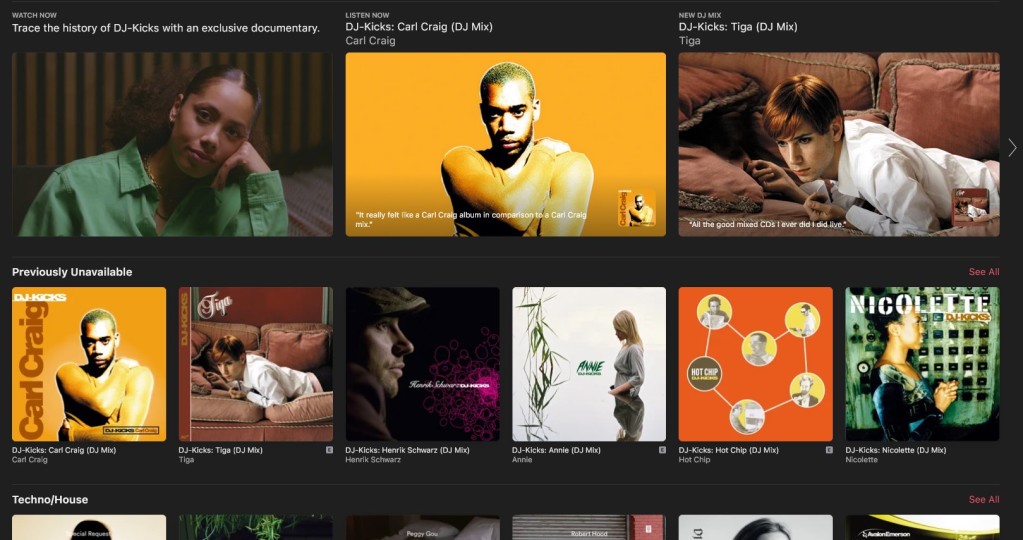
So let’s review / get this in one view:
- Get paid just like any other streams (with the usual split / revenue handling of whoever the rights holders and distributors are)
- Payments are quarterly
- Publishers get paid (though there is not a blanket license here for this – meaning you may still see some occasional takedowns)
- Collection societies – ASCAP, BMI, SESAC, PRS, GEMA, et al – get paid, again exactly as with other streams
- There are dedicated pages for DJ mixes, artists (including DJs), and curators / platforms
- Lossless mixes are supported (and now the majority of these are also lossless)
But will anyone actually earn money? And isn’t this only for big DJs?
Yeah, I mean, those are the questions.
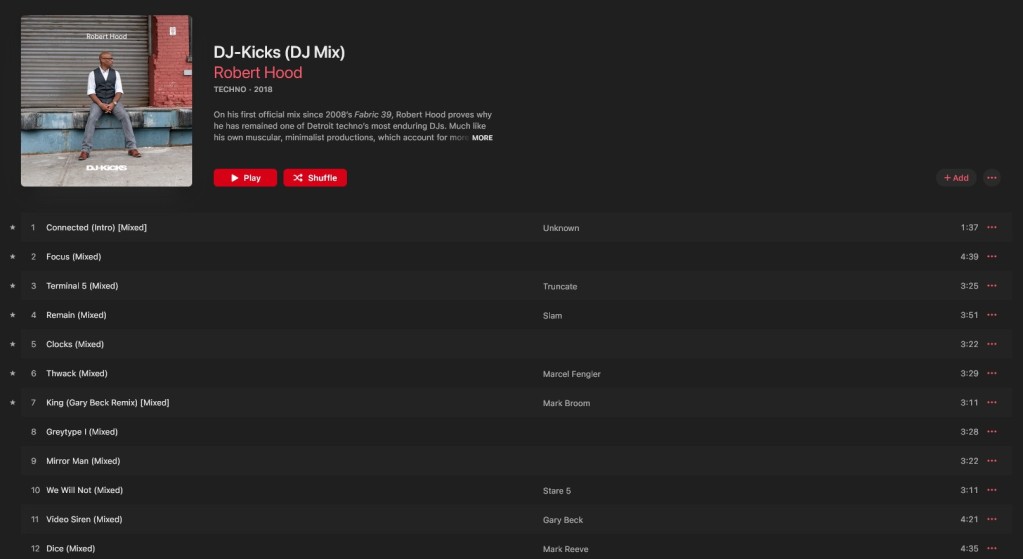
There are a couple of things here to inspire some optimism. First, there is a chance that DJ mixes will prove a better opportunity for streaming royalties than streaming services have been in the past. If your track happens to get onto a workout or chillout mix from someone popular, and that means your track gets utterly rinsed as far as play count, this may add up more quickly – even with the same royalty calculation as the rest of Apple Music. DJ mixes on Apple are popular, which you can see from both DJ charts and official streaming numbers from the company (both readily available if you want to go check – I’ll wait).
Second, there’s clearly more coming. It’s encouraging to see Apple focus on local curators – something its competitors won’t or can’t do in the same way.
I think there’s reason to be critical of all these offerings. What was once a wide-open Internet has unquestionably devolved into a tech oligopoly – and for all those presumably well-meaning editorial staff, that’s reflected on Apple Music. It’s looking more like the old music industry as a result, too.
Coming out of the pandemic, big-name artists are even more separated as the haves from the have-nots, on a scale that’s tough to put into words.
So I hope as this evolve we see a few things:
- Apple needs more, and more varied “providers.” It’s good to have some stars to pull more plays, as I say – as a producer, you might even think a little like Apple about that, if you want to log a bunch of plays. But more variety and contrast is still a good thing, especially locally, so I do want to watch as that evolves. And with that in mind –
- We always need better ways of linking from the open Web, including via independent press. These at least are gradually improving at Apple, though I notice embedding Spotify is more common, despise them as we do, and I think their embed code is part of the reason. Honestly, SoundCloud probably would be bereft of any relevance without their player. Apple, please – think of those embedded players and publisher options as fundamental the product in the same way the iPhone or iTunes or AirPods are.
- Without becoming a user-generated content trash dump, more distribution options are a good thing. I’m actually reasonably sanguine here just having watched the evolution of Apple Music over time. When iTunes launched, it was tough to get on there, too; now it’s second-nature.
- Please, make it easy to buy tracks. Streaming CDJs are not a thing yet. It’s absurd that you can’t just click a track on a DJ playlist and go buy it and bring it into DJ tools, especially given the popularity of the Mac and iPad for that purpose.
Let’s actually try that embed. Here’s the Robert Hood mix I mentioned (have to play with this to make it work a bit better):
And a link (formatted as Germany, rather than switch to VPN for USA):
https://music.apple.com/de/album/dj-kicks-dj-mix/1438788105?l=en
Of course, it’s also “your move” time for Apple’s competition. Spotify will no doubt respond, though they have a big credibility gap to make up with pretty much all of us at this point, unless you actually are a machine learning algorithm. SoundCloud and Bandcamp I think may just continue doing what they’re doing. I’d keep an eye on Beatport to see if they can offer something – and for all the people complaining about Beatport charts, they have more relationships in dance genres than Apple’s more general-audience approach. (Someday we may even learn what the difference between “peak time” and “hype” is.)
But this is a step, and one to watch.
If the only impact were that it begins to view the people making tracks as part of the value of DJ mixes, that alone would be something. So with that in mind, let me close with a mantra:
Share your track IDs. That is all.